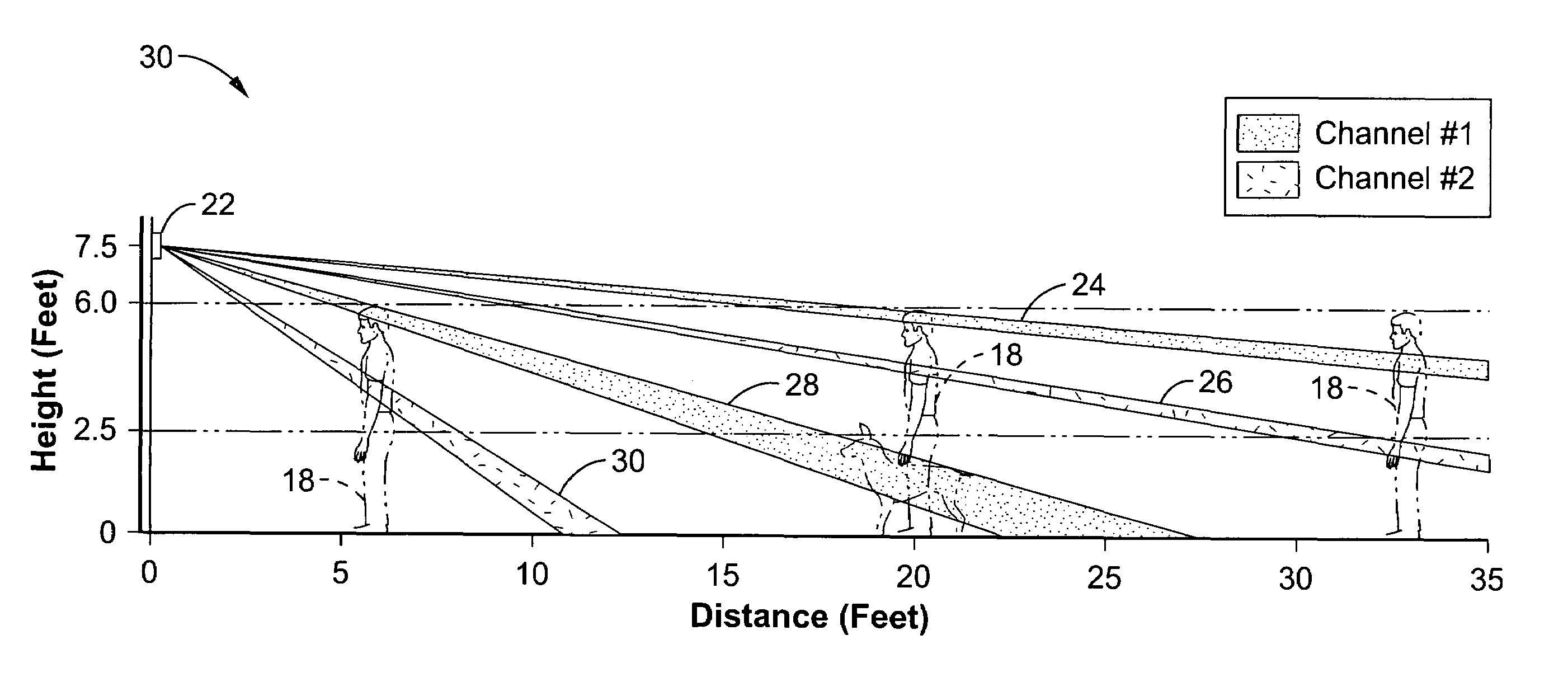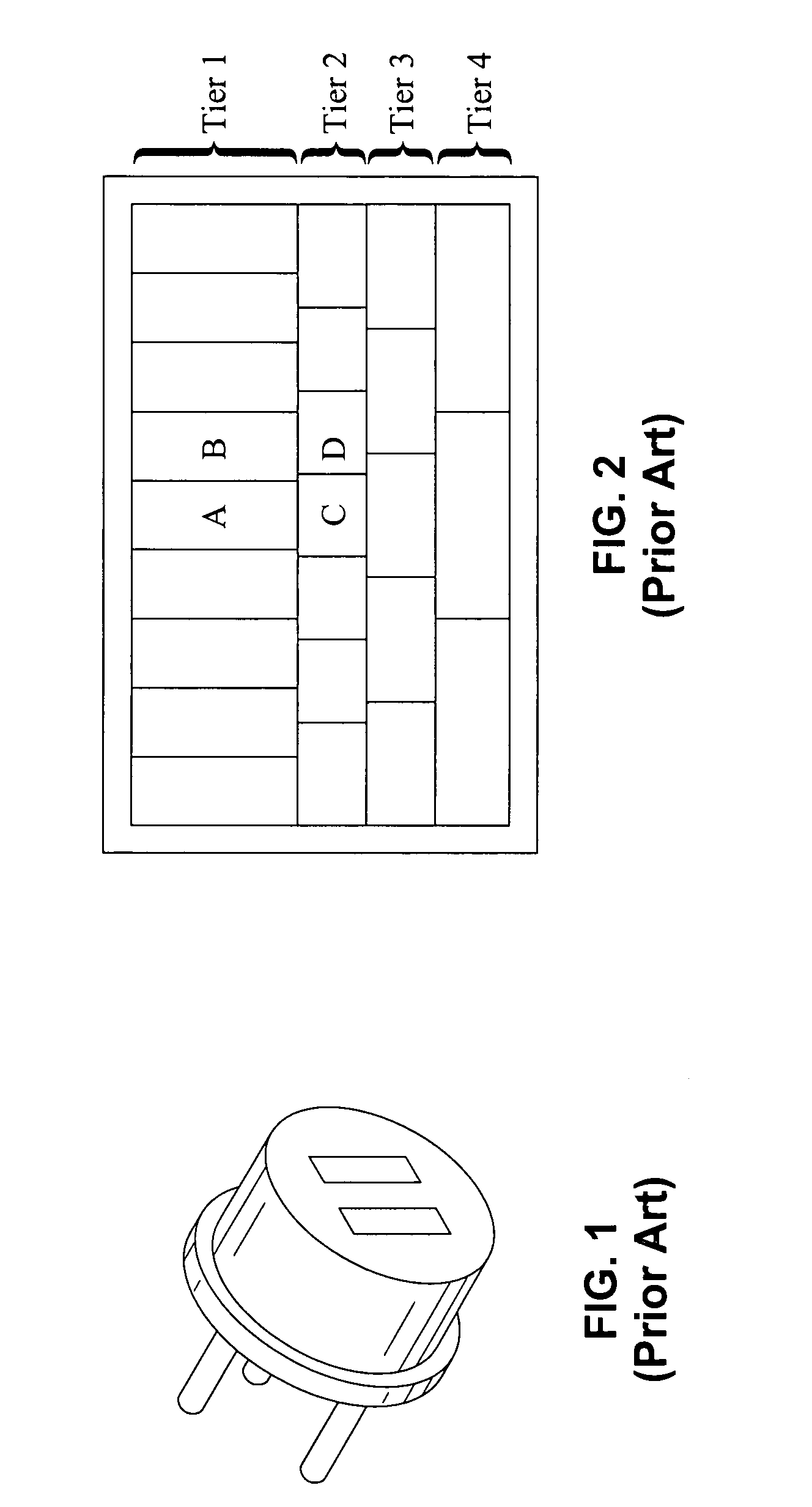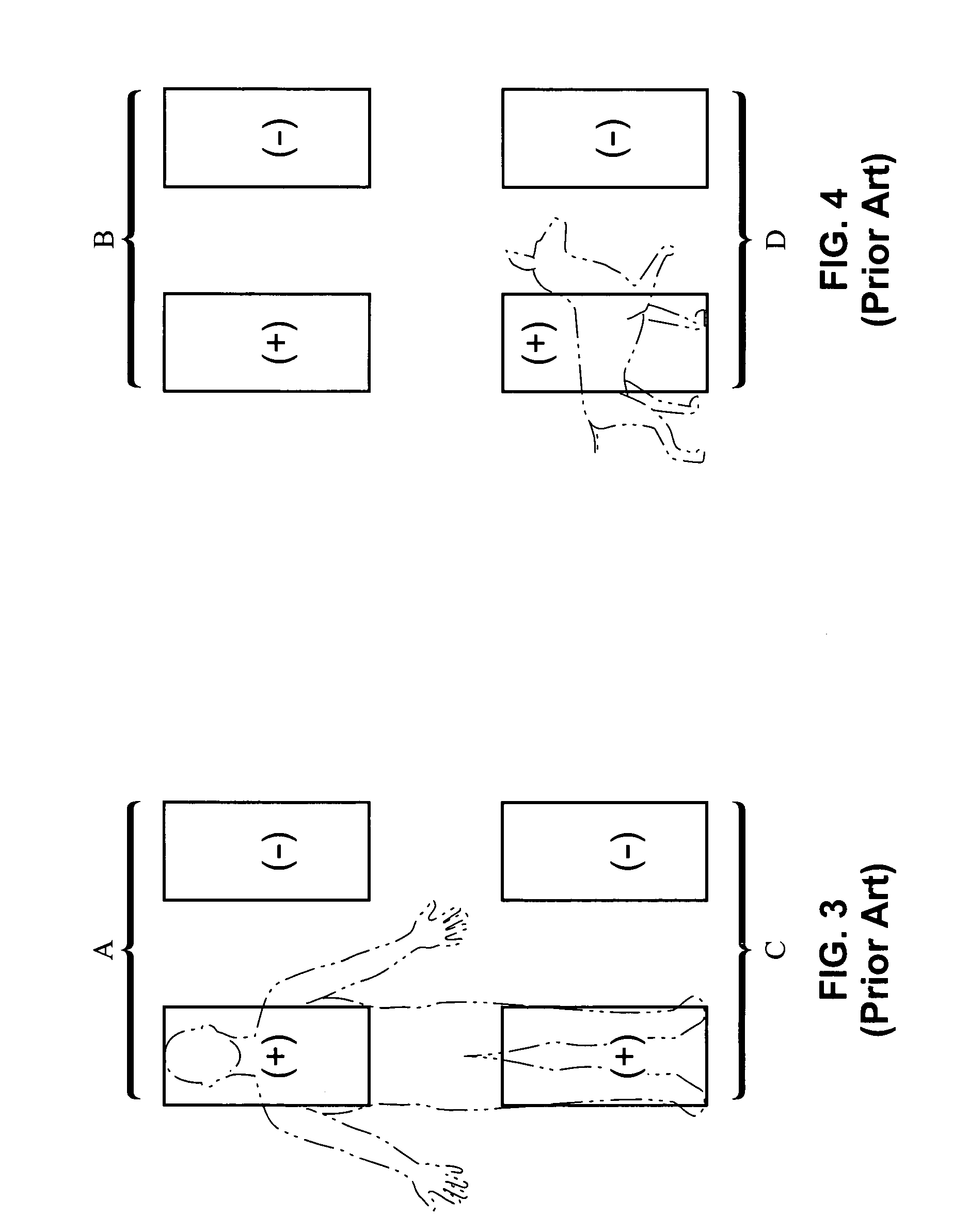Logical pet immune intrusion detection apparatus and method
a technology of intrusion detection and logical pet, applied in the direction of mechanical actuation of burglar alarms, optical radiation measurement, instruments, etc., can solve the problems of inability to discriminate between human intruders, inconvenient conventional detection field geometry, and inability to increase the infrared threshold level, etc., to achieve high metabolic rate and without compromising the ability to detect
- Summary
- Abstract
- Description
- Claims
- Application Information
AI Technical Summary
Benefits of technology
Problems solved by technology
Method used
Image
Examples
Embodiment Construction
[0061]Referring more specifically to the drawings, for illustrative purposes the present invention is embodied in the apparatus generally shown in FIG. 5 through FIG. 15, as well as the methods described in connection therewith. It will be appreciated that the apparatus may vary as to configuration and as to details of the parts, and that the method may vary as to the specific steps and sequence, without departing from the basic concepts as disclosed herein.
[0062]FIG. 5 is a preferred configuration of a dual-channel quad-element infrared sensor 10 shown integrated in a single package 12. This is the preferred configuration having four infrared sensing elements 14a, 14b, 16a, 16b, integrated within a single package. Sensing elements 14a, 14b are preferably coupled in opposing polarity on a first channel, and sensing elements 16a, 16b on a second channel. A detector according to the present invention may be configured using two packaged dual-element pyroelectric infrared sensors. Dual...
PUM
 Login to View More
Login to View More Abstract
Description
Claims
Application Information
 Login to View More
Login to View More - R&D
- Intellectual Property
- Life Sciences
- Materials
- Tech Scout
- Unparalleled Data Quality
- Higher Quality Content
- 60% Fewer Hallucinations
Browse by: Latest US Patents, China's latest patents, Technical Efficacy Thesaurus, Application Domain, Technology Topic, Popular Technical Reports.
© 2025 PatSnap. All rights reserved.Legal|Privacy policy|Modern Slavery Act Transparency Statement|Sitemap|About US| Contact US: help@patsnap.com



